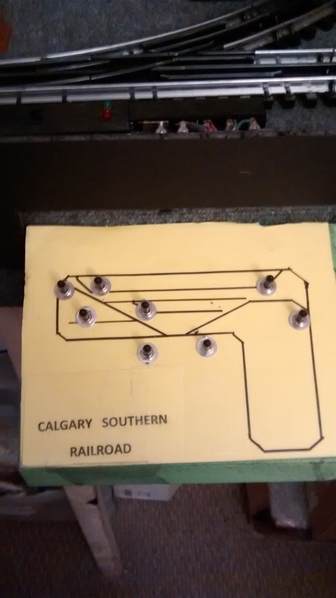I completed a "semi-CTC" board to control yard and a scissor crossover turnouts. Its semi because I do not control the layout signals, they change their indications as turnouts change position. It is wired parallel with the MTH control system so turnouts can be changed from remote or locally. The un-protypical yellow and green stripes aids the wife which way to turn the levers to route trains. I found that I can preset the levers then press the code buttons to change turnouts when ready saving time scrolling through the remote switch menu
And for the rivet counter nit picker, on real CTC model boards, turnout levers are odd numbered and signal levers even numbered, but I ain't gonna crawl under that layout again rewiring things again just to conform.....![]()
Here are pictures. First photo is blurry as I don't know what camera was "looking at" (maybe shiny rails?).
And gasp, I documented everything for the "big book"!
!t ain't "purdy" but it works!! ![]()





















